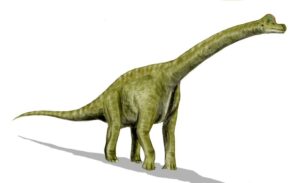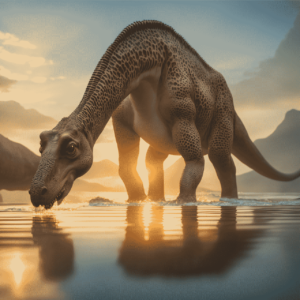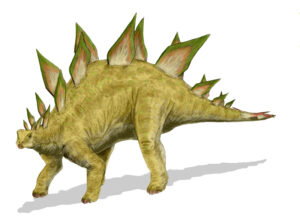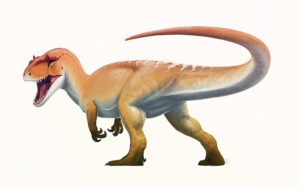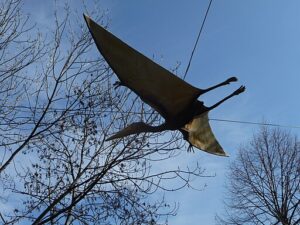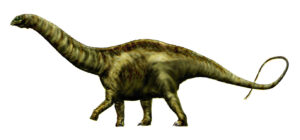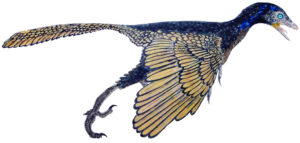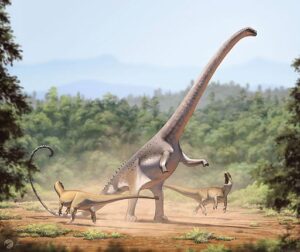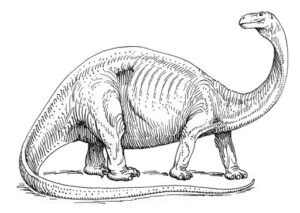Brachiosaurus
- When: Late Jurassic
(154–150 mya) - Where: North America
- What: Sauropod
- Weight: 28–58 tons
- Length: 20–25 meters
- Diet: Herbivorous
- Discovered: 1903
The Late Jurassic period, spanning from approximately 163 to 145 million years ago, was a time of remarkable dinosaur diversity and dominance. It was during this period that some of the most iconic and largest dinosaurs roamed the Earth, creating a vibrant and dynamic ecosystem.
During the Late Jurassic, the supercontinent Pangaea continued to break apart, leading to the formation of the Atlantic Ocean as North America drifted away from Europe and Africa. This tectonic activity created diverse habitats, including vast deserts, lush forests, and expansive floodplains. The climate during the Late Jurassic was generally warm and humid, providing ideal conditions for the growth of extensive forests and diverse plant life.
The Late Jurassic period is best known for its gigantic sauropod dinosaurs, which dominated the landscape. Some of the most famous dinosaurs from this time include:
The oceans of the Late Jurassic were teeming with life. Marine reptiles such as ichthyosaurs and plesiosaurs thrived, and the first true sea turtles appeared. The ammonites, a group of cephalopods with spiral shells, were abundant and served as important index fossils for this period.
Pterosaurs, the flying reptiles, were also prominent during the Late Jurassic. Species like Pterodactylus and Rhamphorhynchus soared through the skies, hunting fish and small terrestrial animals. These creatures had wings made of a membrane stretched between their elongated fourth finger and their bodies.
The vegetation of the Late Jurassic was dominated by conifers, cycads, and ferns. These plants formed the primary food source for the large herbivorous dinosaurs. Flowering plants had not yet evolved, so the landscape lacked the colorful flowers we see today.
Many important fossil sites from the Late Jurassic period have provided valuable insights into the life of this era. The Morrison Formation in North America is one of the most famous, yielding numerous dinosaur fossils, including those of Apatosaurus, Diplodocus, and Allosaurus. The Solnhofen Limestone in Germany is another significant site, known for its exceptionally well-preserved fossils, including the early bird Archaeopteryx.
